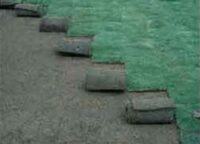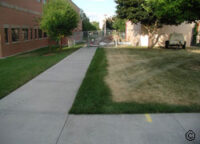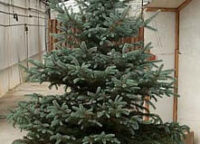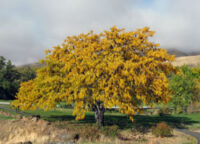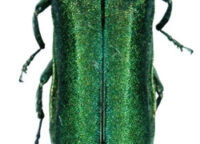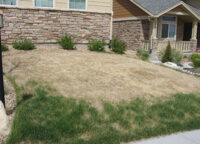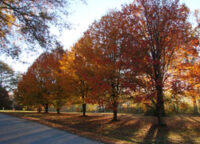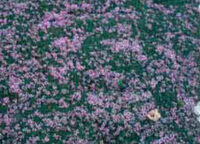- 02, 01, 2017
- Comments Off on 1539 – Fall Planting of Sod
- By cwis672
1539 – Fall Planting of Sod
Sod of cool-season turf species can be planted as long as the soil is not frozen. Sod planted late in the fall must be irrigated during the winter to prevent drying since it has little time in the fall to develop a substantial root system. Adequate winter watering will maintain moisture in the sod and […]
Take a Tour- 01, 31, 2017
- Comments Off on 1540 – Drought Tolerance of Kentucky Bluegrass
- By cwis672
1540 – Drought Tolerance of Kentucky Bluegrass
If the average person was asked to give 10 reasons for local water shortages, there is little doubt that “Kentucky bluegrass” would be at or near the top of the list. It might seem that our water woes could be partially solved by simply eliminating this plant from our landscapes and using something else in […]
Take a Tour- 01, 19, 2017
- Comments Off on 2017 – Christmas Trees: Care for Living Trees
- By cwis672
2017 – Christmas Trees: Care for Living Trees
What are the different varietes of Christmas trees? Many nurseries offer live, potted Christmas trees including: pinyon, ponderosa, limber, Austrian, bristlecone, and Scotch pines. Other varieties include: blue spruce, dwarf Alberta Spruce, white fir and Douglas fir. What should I consider before buying a tree? Before purchasing one, decide where the tree will be planted […]
Take a Tour- 11, 23, 2016
- Comments Off on 1400-10 – Honeylocust Decline
- By cwis672
1400-10 – Honeylocust Decline
Honeylocusts (Gleditsia spp.) are widely planted as landscape trees along the Front Range. Why do the honeylocust look thin? In recent years, many honeylocust canopies look thin due to fewer and smaller leaves combined with dieback of twigs and branches. What can cause stress to honeylocusts? Honeylocusts have experienced several stresses over the past few […]
Take a Tour- 11, 21, 2016
- Comments Off on 1400-23 – Pest problems After Dry Weather
- By cwis672
1400-23 – Pest problems After Dry Weather
Dry fall and winter weather stresses plants and predisposes them to disease and insect pests. Often the following problems develop after dry falls and winters. Winter injury (desiccation, “burn”) of evergreens, results from lack of water. Warm, sunny, windy days promote transpiration but there may not be enough water in soil for plant roots to […]
Take a Tour- 11, 18, 2016
- Comments Off on 1739 – Plant Health Care
- By cwis672
1739 – Plant Health Care
“Plant Health Care” is a six-component prescriptive care program for your landscape. Tree selection. Do not fall into the trap of selecting the fastest growing tree. They provide shade quickly, however are a source of disappointment in later years. Fast growing trees often outgrow the selected site and their soft wood will break in storms. […]
Take a Tour- 11, 16, 2016
- Comments Off on 1400-13 – Mite Damage to Lawns
- By cwis672
1400-13 – Mite Damage to Lawns
What can cause turf damage? Turf damage caused by clover mites or Banks grass mites is common during February-May in Colorado, especially if precipitation is below normal and lawn gets no winter watering. Depending on the severity of the infestation, turf damage may range from minor thinning to complete kill. What does mite-damaged turf look […]
Take a Tour- 09, 30, 2016
- Comments Off on 1120 – Tree Placement Tips
- By cwis672
1120 – Tree Placement Tips
Trees are the most influential plants in the landscape, and their placement is very important. Placing trees is like developing the skeletal structure of your landscape that other plants reinforce. This structure can help you organize your landscape into areas that support various activities and uses. Deciduous trees have overhead canopies that create “outdoor rooms” […]
Take a Tour- 09, 28, 2016
- Comments Off on 1063 – Thyme
- By cwis672
1063 – Thyme
How do I grow cooking thyme? There are more than 400 species of thyme, but cooking thyme is most often grown in a kitchen garden. Although not reliably hardy over the winter, it may be grown as an annual. Cooking thyme may be started from seed or by dividing another cooking thyme plant. This standard […]
Take a Tour- 09, 28, 2016
- Comments Off on 1408 – Clover Mites
- By cwis672
1408 – Clover Mites
What are clover mites? Clover mites are very small red and green mites, often concentrated in lawn grass next to the foundation of a building. They are especially abundant in Colorado during dry, warm winters, often congregating on the south and west side of buildings. Several generations are born during their winter-spring active period. What […]
Take a Tour
